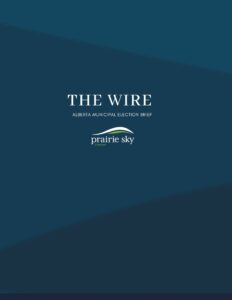A noteworthy decision for the Province of Alberta and Indigenous peoples, particularly the Blood Tribe/Kainai, was handed down late last week by the Supreme Court of Canada.
A unanimous decision in Shot Both Sides v. Canada, 2024 SCC 12, addressed the question of the application of limitation periods to Aboriginal rights and treaty claims. The Supreme Court found that the Alberta Limitation of Actions Act, which states that all claims must be brought within six years of discovering the cause of action, does apply to Treaty Rights.
The implication is that Treaty does not supersede other laws. This decision was a disappointment to the Blackfoot community and will have important ramifications for other First Nations in Canada.
In this case, both the Crown and the First Nation agreed that a wrong had been committed. Specifically, they agreed that in signing Treaty 7, the Crown had promised to provide a reserve according to treaty land entitlement provisions of one mile per family of five. Canada provided Kainai with a home reserve that fell short of this metric by 162.5 square miles. Significantly, the Supreme Court held that the wrong did occur and described the behaviour of the Crown as “deplorable” and “dishonourable”.
The decision also addressed the role of declaratory relief in providing legal clarity and in promoting reconciliation between the Crown and Indigenous peoples. That is, while the decision by the SCC was to deny the claim by the First Nation, they have made a declaration that a wrong was committed and that the honour of the Crown has been breached.
The effect of this declaration is to put pressure on the Crown to meet the Treaty obligation even though they are not being forced to do so by the Court. That means the Blood Tribe/Kainai may ultimately get the desired outcome without a court order.
The path forward for the Nation is likely the Specific Claims Tribunal, which is an independent adjudicative body designated to the resolution of land and treaty claims by First Nations. The government may recognize a Treaty Land Entitlement (TLE) claim by the Blood Tribe which sets out a commitment by the government to provide funding for the acquisition of the missing land on a willing buyer-willing seller basis.
This means that the Blackfoot Nation will be looking to buy either Crown or privately held land equaling 162.5 square miles that can then be added to their reserve. While the land does not need to be contiguous with the current reserve, the band will likely want to find land close by.
This will also have implications for other communities in southern Alberta. A large land purchase of this kind may have an affect on land prices and municipal taxes. For businesses looking to partner with the Blood tribe, new opportunities may become available for large scale installations and developments.
TLEs are not uncommon in Alberta, and many have been resolved over the last 30 years. The process can be quite lengthy, but the declaration provided by the Supreme Court should have the intended effect of encouraging expedited action.
We’re Here to Help
For more information and insights about what these developments mean for the Indigenous landscape, please contact:
Tara Bingham – Vice-President
tara@prairieskystrategy.ca
204.390.7760
Richard Feehan – Senior Strategy Advisor
feehan@prairieskystrategy.ca
780.940.8956
Bronte Prosser – Strategy Advisor
bronte@prairieskystrategy.ca
306.270.7405
To learn more about Prairie Sky Strategy, please visit our website.





